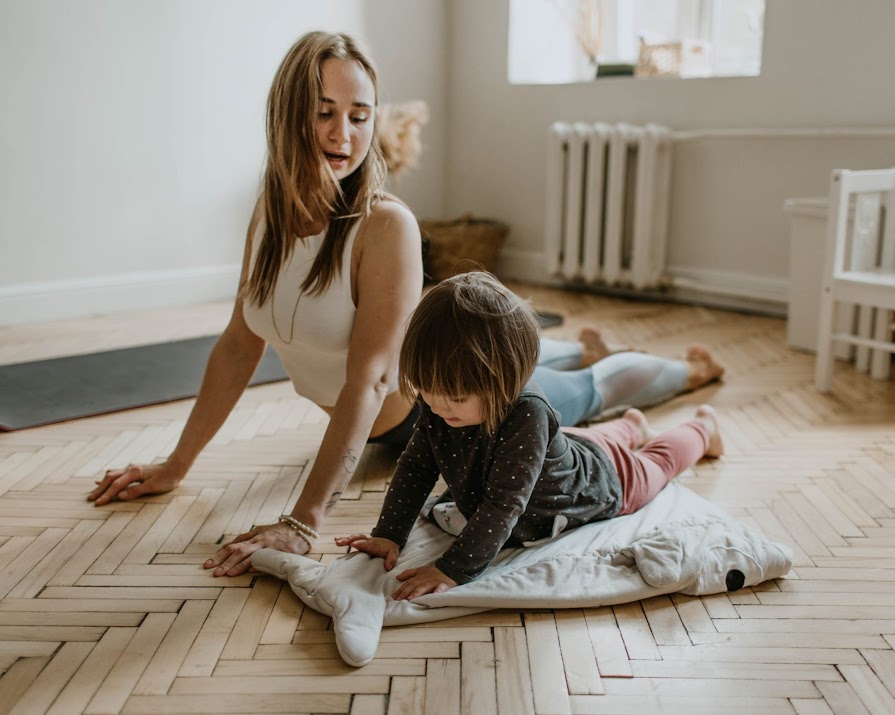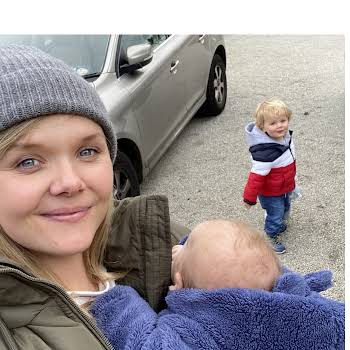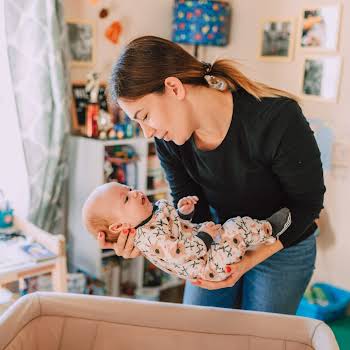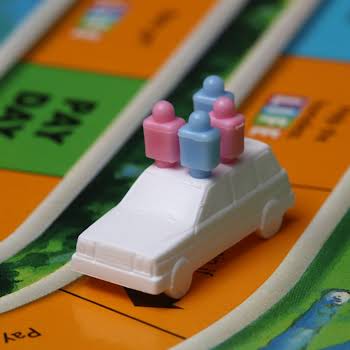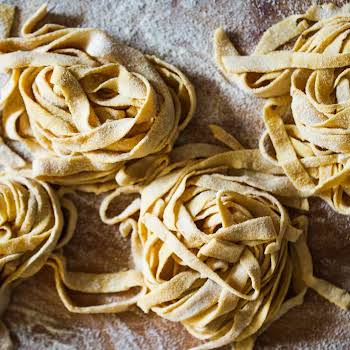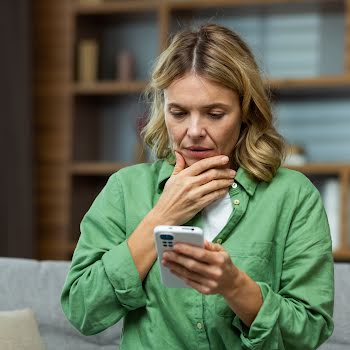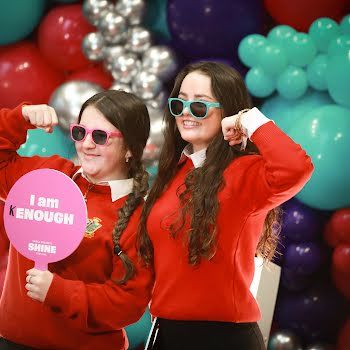
How being present with your children is the greatest gift you can give this Christmas
By Julie Meehan
12th Dec 2021
12th Dec 2021
What does being present in yourself truly mean, and how can it help your parenting relationship with your child? Clinical psychologist and parenting coach Julie Meehan weighs in.
Presence is one of those terms that seems to be used a lot nowadays. We might hear people referring to someone as having ‘great presence’, or that someone felt a sense of their own presence while breathing deeply on a yoga mat. It’s a term that can seem a bit ethereal and mystical, and as a result, completely unattainable beyond the quiet sanctuary of the yoga mat.
Drawing on your own presence in your relationship with your children may seem entirely impossible when you are in the grittiness of everyday life. When there are 101 things being asked of you and you are being pushed to your limits, levitating in the full lotus position may seem like an easier option than being present with them.
Paradoxically, it is these gritty moments of parenting that are precisely the time when tapping into your own sense of presence may offer you and your child another option for how you are relating to each other.
Before I go on to explain why, let me first offer a definition of presence that is grounded in everyday life. Presence is the capacity to be present with yourself and with whomever you are relating to. Being present means that you are available to what is going on in that moment, without being captivated by thoughts about the past or the future or even with what you want to be happening in that moment, rather than what actually is. It is when you can turn down the mental noise and in spite of whatever emotion is grabbing your attention, you can pause enough so you can first connect with yourself, and then with whomever you are relating to so that they experience you as really seeing them and listening to them.
Presence in action
Let’s say you are late for work — you can’t find your car key and your daughter is lying flat on her bed, head down, refusing to get dressed, despite being reminded 18 times in the last hour to do so. You know that the rest of the morning pivots on how you handle the next few moments with her. Feeling extremely challenged and pressured, it is easy to find yourself being governed by thoughts of the past (‘where did I leave that key, oh I think it might still be in the ignition’), thoughts of the future (‘If I can get her dressed and bribe her into the car for school in the next five minutes, then I will only be 15 minutes late’) and strong desires for the situation to be different to what it is (‘I can’t believe this is happening again. Why can’t she be like the other two? What’s wrong with her? What’s wrong with me?’).
Being consumed by these thoughts, we are taken away from our capacity to be centred and flexible, and we are more likely to find our relating to our children to be governed by high emotion and ineffective parenting strategies such as relying on idle threats or promises of rewards that you know are going to be difficult to follow through on.
I found myself in this very situation with my five-year-old daughter recently. With her head down on the bed and the clock ticking for school, the internal chattering of my thoughts was trying to dominate how I dealt with the situation, until I remembered that I had a choice.
So, I stopped my badgering and panicking, and sat at my daughter’s bed, took a breath and took a guess at how she was feeling. Immediately I noticed by naming what she was feeling (‘I’m guessing you are feeling a bit sad and you don’t really want to go to school’), there was a shift in my daughter’s body language and how she looked at me: she felt more seen and understood.
This brought more calm into her system, and spurred me on to continue with this approach. I calmly outlined three options for how we could manage the rest of the morning, and she quietly responded by saying ‘there’s a fourth option… give me a hug’. And then I realised what she had needed all along: a hug to soothe her and a few minutes for me to acknowledge how she was feeling. As I hugged her, I felt her body relax even more, and I sensed that she was feeling more centred and regulated – and so was I.
In that space where we both felt more centred, we worked it out. Not perfectly, but we found a ‘good enough’ way to continue our morning without more conflict and stress. Being present asks you to make a choice: the choice to be willing to turn down the volume on all of those competing thoughts and emotions, at least temporarily, and stop and connect with yourself, and your child. The choice to ask yourself, ‘is there a better way I can relate to my child right now?’
And there is always a choice.
The power of presence
Presence may seem like a mystical phenomenon that only a select few enlightened beings have access to, but in fact, it is accessible to any one of us at any time. What’s more, the science of presence shows us that when we pause, connect with ourselves and whomever we are relating to, our brain biology and physiology works in such a way that we feel more centred and the person we are relating to also begins to feel more centred and connected and this reciprocal feedback loop continues to regulate both people. It literally can be the gift that keeps on giving.
Being present, or ‘showing up’ for our children in any moment is singularly one of the most important gifts that we can offer in our relationships with our children. As the American psychiatrist, Dr Dan Siegel and his psychotherapist colleague Dr Tina Payne Bryson say in their book on presence in parenting, ‘Parenting isn’t easy, but showing up is. Your greatest impact begins right where you are’.
How we can access presence
It may seem simple, but we all know how hard it can be trying to be present when we are pulled in so many directions. Here are a few pointers that may help you.
Pause to connect with your body
Often when we are caught up in a stressful and emotional interaction with our children, we can find it hard to pull ourselves out of the dynamic. Try to anchor your pause by paying attention to something in your body: your breath, feeling your feet connect to the floor, applying gentle pressure to the fleshy part of your skin between your thumb and index finger. Find what physical anchor works for you. This helps to literally embody our intention to stop: when we connect to our bodies, we feel more grounded. Even just for a split second, because often that’s all it takes.
Remembering the Choice Point: Conflict or Connection?
When you have found the opening that allows you to stop, even temporarily, you might find it helpful to remember that we always have choice points in our interactions with others. These are junctures in an interaction with another where we recognise that we can choose to either continue as we are going, or open up to another path — one that engenders connection rather than conflict. You might ask yourself a question, ‘is there another way that I can steer this right now?’ Remember, connection calms — conflict agitates.
Presence recognises presence
When you are looking to connect with your child, but you are finding it hard to ‘see’ and ‘hear’ them through the high emotion, it can be helpful to remember that whatever sense of calm you are connecting to within yourself is also present in your child. It may be almost unrecognisable at that moment, but it is there.
Picking an anchor point as a way to ‘see’ and feel the presence in your child can be really helpful — you may choose to look at the light as it reflects on their skin, or look into their eyes, deep into their pupils. You may remember that is there is a purpose to their behaviour, that in some way it is communicating a need to you. This may sound a bit fluffy, but it is the exact opposite. It gives you a chance to connect with them beyond all the noise and behaviours.
Communication soothes
You may recall from my previous pieces on supporting your child when big emotions show up that using language to name children’s experiences helps the brain to harmonise more, leading to more regulation (‘to name it is to tame it’). This is what I did with my daughter and in that moment, it helped. But words are only part of it.
We communicate so much by our tone of voice, our facial expressions, the way we use our eyes and how we position our bodies. It is unlikely that your child will experience you as present with them if they are picking up on non-verbal cues that suggest that you are against them rather than with them. These pointers may seem subtle and easily missed, but they can be so powerful.
Practise, practise, practise
Whether it is easing into an asana pose on the yoga mat, hiking up a mountain, meditating, or simply sitting a watching a robin hop from branch to branch on a tree, the more we practise quietening our minds and falling into a flow state, the more likely that we are to be simply present, with ourselves, with others, with each moment. And you may find that it becomes easier to show up for your children in those really testing moments – when they most need your presence and calm. It may be a bit of a cliché, but it is still true: Being present is undoubtedly one of the greatest gifts that we can offer our children and ourselves, be it this Christmas or in any one moment. And what’s more… it is entirely free.
Dr Julie Meehan is a Clinical Psychologist, Parent Coach, Workshop Facilitator and mum. juliemeehan.com.
This article originally appeared in December 2019.











